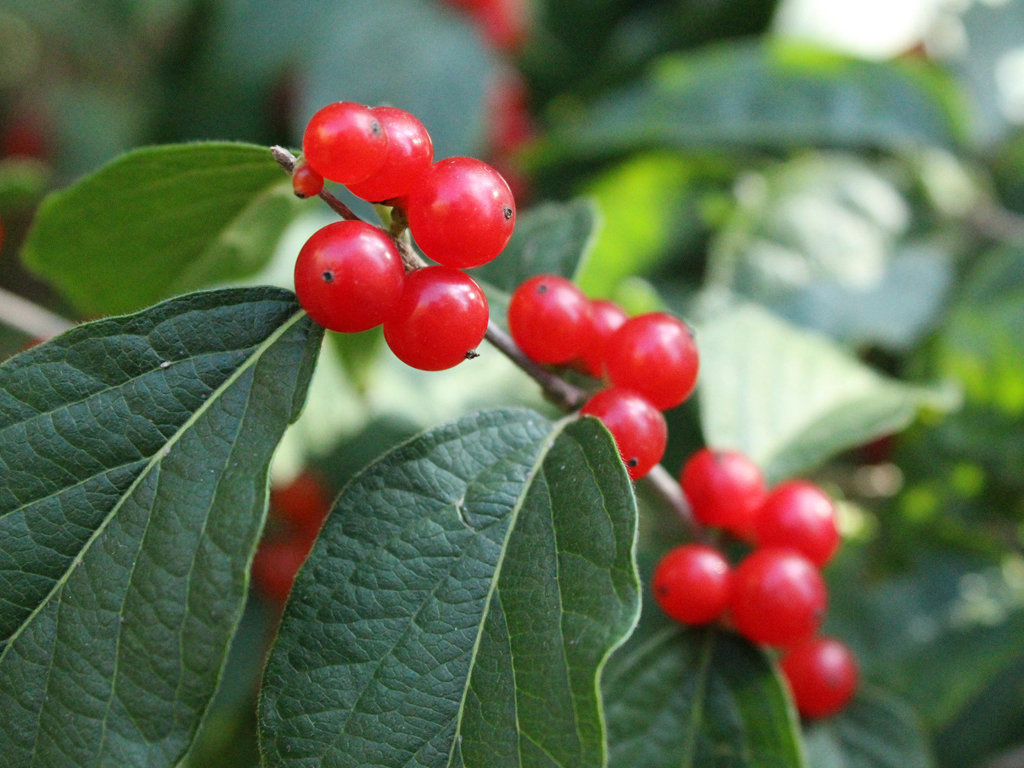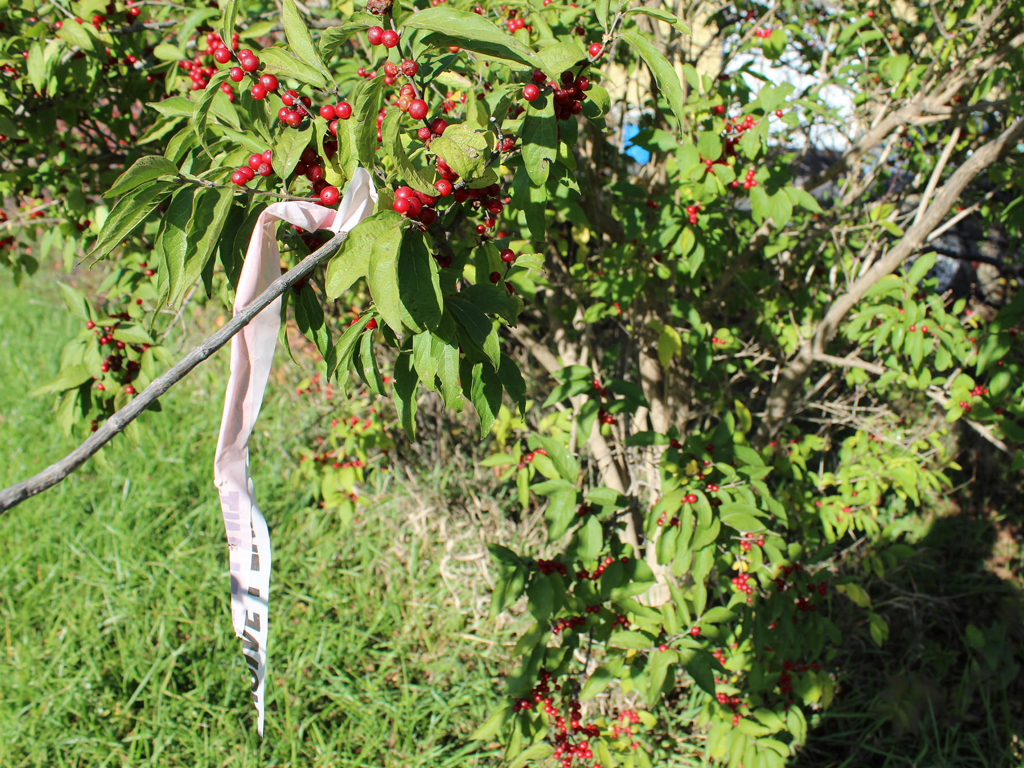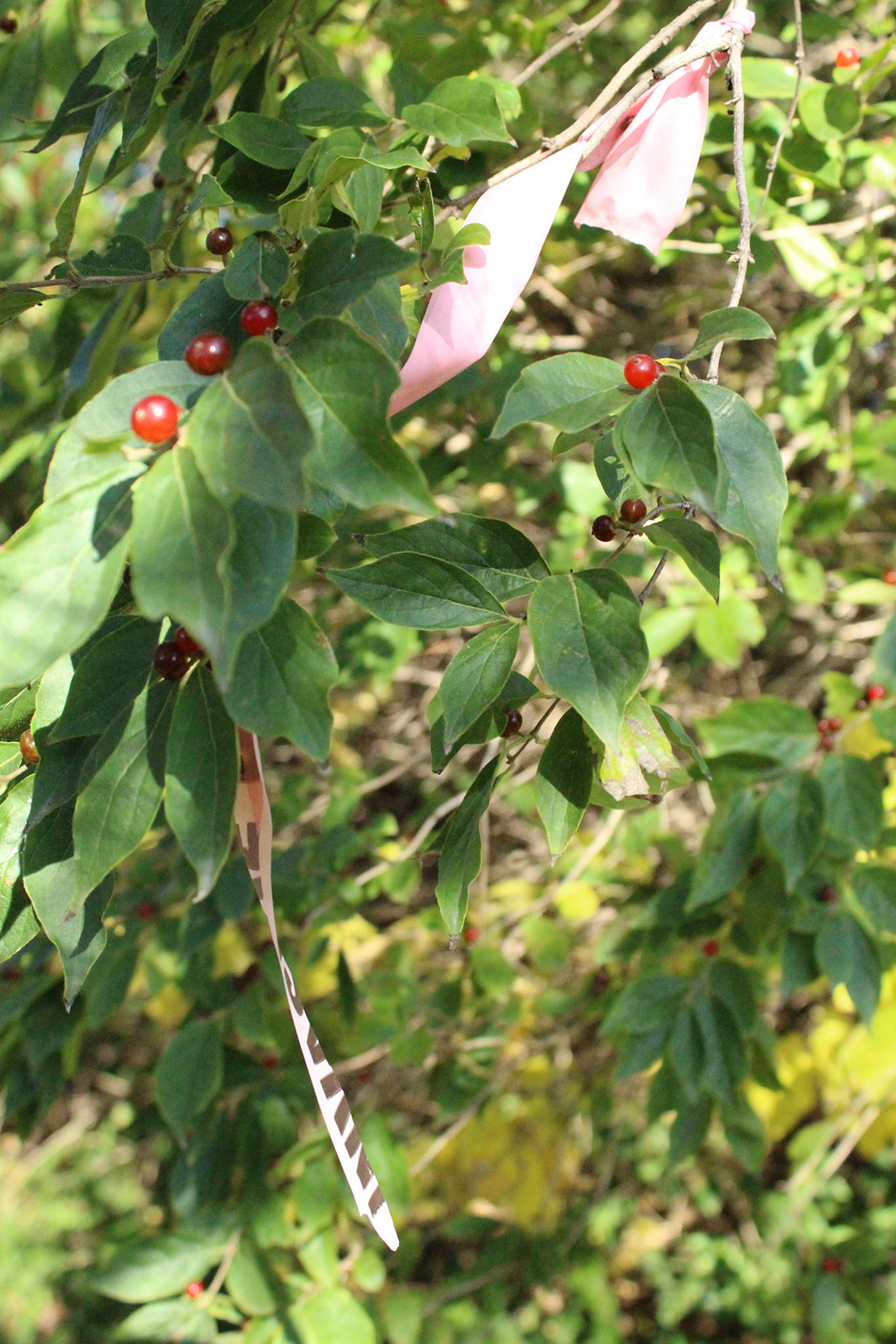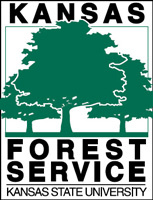
Asian bush honeysuckle is an invasive species that is increasingly becoming a problem in Kansas. | Download this photo.
Invasive Asian bush honeysuckle can be controlled in the fall
Kansas forester suggests backpack mist blower
November 8, 2018
MANHATTAN, Kan. — Asian bush honeysuckle is an invasive species that is slowly taking over Kansas landscapes, negatively impacting wildlife habitat and decreasing local ecosystem functionality.
“There are many options when it comes to controlling bush honeysuckle,” said Ryan Armbrust, forest health forester with the Kansas Forest Service, adding that fall presents an ideal opportunity to identify and treat the invasive species.

“Bush honeysuckle is one of the last woody plants in our Kansas landscapes to drop leaves in the fall. Combined with the bright red fruit the plant puts on, bush honeysuckle is easy to spot starting in early November,” Armbrust said.
As other plants go dormant in early and late fall, bush honeysuckle remains active. Chemical treatment in the fall is an effective option when controlling large stands with minimal to no damage to desirable plants while they are in a dormant state.
Large stands of bush honeysuckle can easily be chemically treated with the use of a backpack mist blower, Armbrust said. Mist blowing offers effective control at a low cost per acre by decreasing the time spent and possibly the cost of chemicals. A backpack mist blower allows for quick treatment of large areas without a decrease in effectiveness. It is common to treat one to two acres per hour effectively with little impact on non-target species when applied in the late fall.

To assist in chemical treatment, KFS has two backpack mist blowers that are available for loan to private landowners, contractors, or other state and federal agencies. Contact Armbrust at rarmbrust@ksu.edu to request a mist blower.
More information about the chemical treatment of Asian bush honeysuckle can be found in a publication through the K-State Research and Extension Bookstore.


